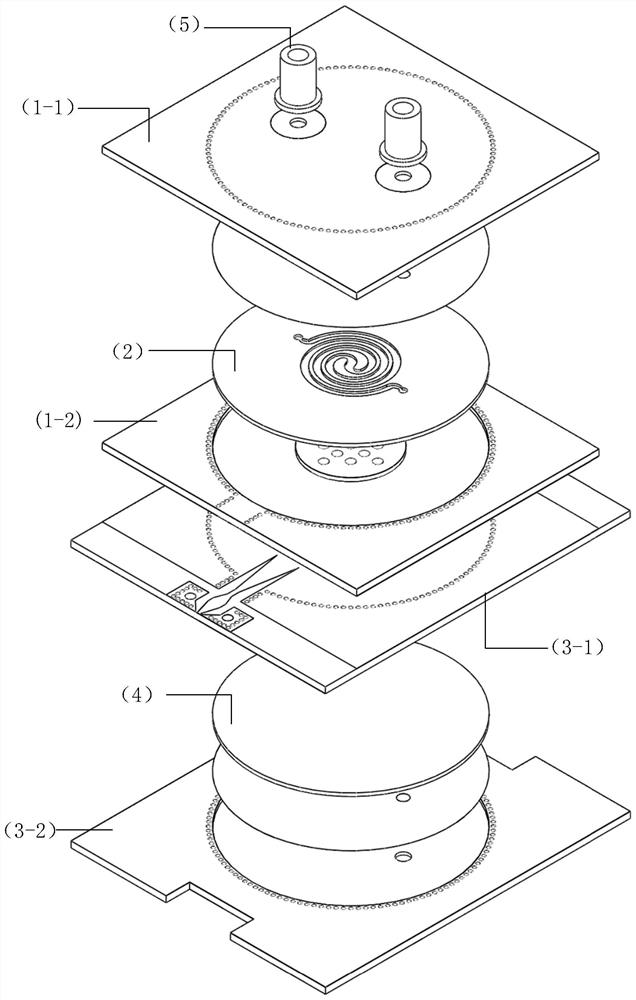Microwave differential sensor based on substrate-integrated waveguide reentrant cavity and microfluidic technology
A substrate-integrated waveguide and resonant cavity technology, applied in the field of sensors, can solve the problems that the process cannot obtain a good transmission response, reduce the sensitivity of small disturbances, and it is difficult to solve the problem of feeding, and achieves compact structure, reduced manufacturing costs, and good electromagnetic properties. The effect of isolation
- Summary
- Abstract
- Description
- Claims
- Application Information
AI Technical Summary
Problems solved by technology
Method used
Image
Examples
Embodiment Construction
[0039] In order to better describe the design process and purpose, the present invention will be further described below in conjunction with the embodiments and accompanying drawings:
[0040] Such as figure 1 As shown in Figure 7(a) and Figure 7(b), the microwave differential sensor based on substrate-integrated waveguide re-entrant cavity and microfluidic technology proposed by the present invention includes two substrate-integrated waveguide re-entrant cavity and two The chip is embedded in a microfluidic chip placed in the resonant cavity.
[0041] The resonant cavity (1) is composed of an upper cover plate (1-1) and a lower bottom plate (1-2). Both the upper cover plate (1-1) and the lower bottom plate (1-2) include a three-layer structure, which are respectively a top metal layer, an intermediate dielectric layer and a bottom metal layer. The resonance cavity (3) is composed of an upper cover plate (3-1) and a lower bottom plate (3-2). Both the upper cover plate (3-1)...
PUM
| Property | Measurement | Unit |
|---|---|---|
| width | aaaaa | aaaaa |
| length | aaaaa | aaaaa |
| width | aaaaa | aaaaa |
Abstract
Description
Claims
Application Information
 Login to View More
Login to View More - R&D
- Intellectual Property
- Life Sciences
- Materials
- Tech Scout
- Unparalleled Data Quality
- Higher Quality Content
- 60% Fewer Hallucinations
Browse by: Latest US Patents, China's latest patents, Technical Efficacy Thesaurus, Application Domain, Technology Topic, Popular Technical Reports.
© 2025 PatSnap. All rights reserved.Legal|Privacy policy|Modern Slavery Act Transparency Statement|Sitemap|About US| Contact US: help@patsnap.com



